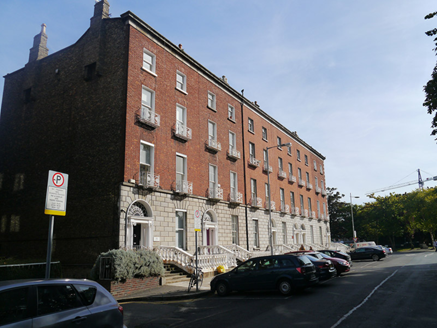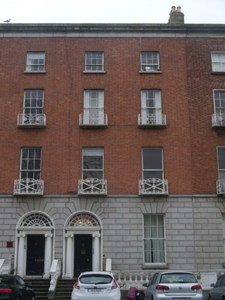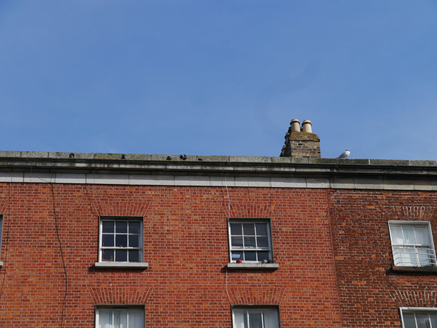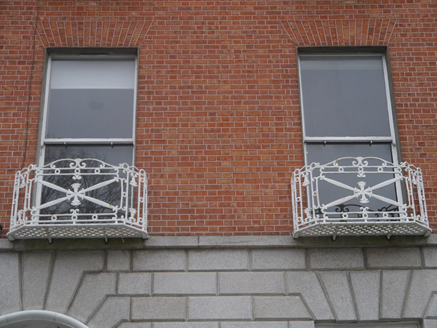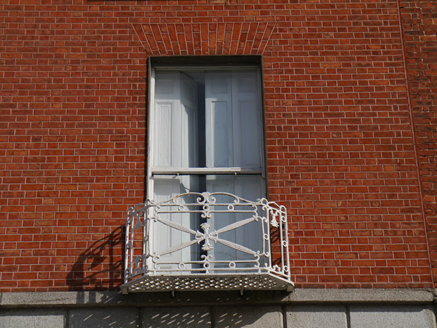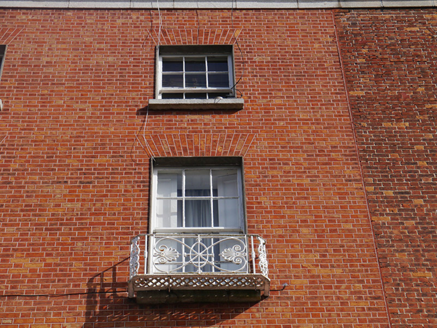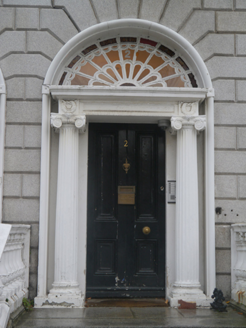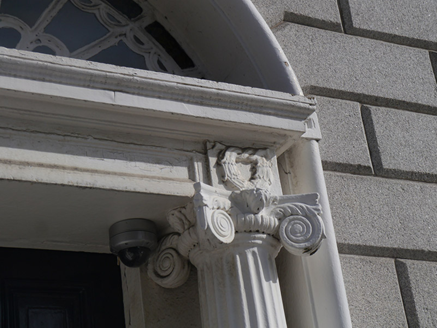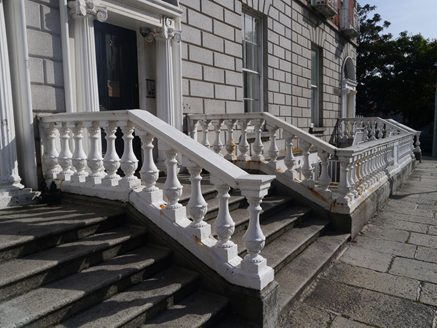Survey Data
Reg No
50930187
Rating
Regional
Categories of Special Interest
Architectural, Artistic
Original Use
House
In Use As
Apartment/flat (converted)
Date
1840 - 1845
Coordinates
316798, 232943
Date Recorded
29/09/2015
Date Updated
--/--/--
Description
Terraced two-bay four-storey former townhouse over basement, built 1841, as a terrace comprising Nos. 1-6 (50930186-91). Now converted into apartments. Pitched roof to front (south) span, hipped to west-end, with shared M-profile hipped roof to rear span (north) with ridge running perpendicular to street. Brick chimneystacks with lipped yellow clay pots to east party wall, concealed behind ashlar granite parapet with moulded cornice and coping. Concealed rainwater goods. Red brick walling laid in Flemish bond with rusticated granite walling to ground floor over offset granite plinth, rendered walling to basement. Square-headed window openings with projecting granite sills, continuous to first floor, voussoired heads and rendered reveals to upper floors, sills and surrounds to basement. Openings diminishing to upper floors. Windows are largely six-over-six sliding timber sashes with cavetto horns, six-over-three to third floor, ten-over-ten to basement and replacement one-over-one to first floor with convex horns. Ornate cast-iron balconettes affixed to first and second floor openings. Round-headed door opening with granite voussoirs, moulded rendered reveals and Neo-classical doorcase comprising fluted Scamozzian-Ionic columns on plinth stops rising to moulded cornice with panelled frieze featuring wreathes. Ornate petal fanlight over four-panelled timber door with beaded-muntin and brass furniture. Granite entrance platform, with cast-iron boot scraper, six bull-nosed granite steps to street flanked by masonry balustrades on granite plinths, enclosing basement well to east-side. Plainly detailed replacement timber door and casement sidelight beneath entrance platform, similar door to south basement wall, leading to storage area beneath pavement. Granite paving to street with cast-iron coal-hole covers. Street fronted on north side of Wilton Place, overlooking Grand Canal to south and an enclosed park to south-west.
Appraisal
One of a terrace of six, this former townhouse was originally intended to be part of a large-scale scheme, devised c. 1830 by Arthur Neville, for a crescent framing a semi-circular park, overlooking the Grand Canal. Delayed and then revised due to failed negotiations over land acquisition, the terrace was eventually built in 1841, with four houses constructed by George Farrell. One is attributed to Henry McManus. Characterised by granite rusticated ground floors, decorative iron balconettes, balustraded stone steps and good Scamozzian-Ionic doorcases, the terrace is largely well retained, despite some alterations and loss of historic fabric. The terrace defines much of the streetscape character of Wilton Place, and is the only realised section of a grand-scale mid-nineteenth century planning scheme.
